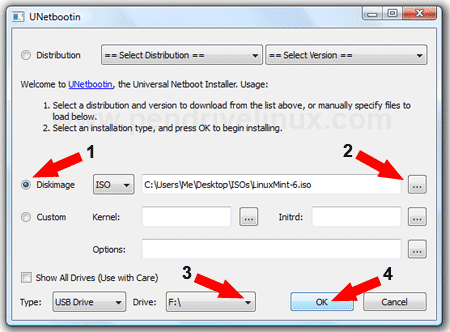

- LINUX LIVE USB FOR MAC ON WINDOWS FULL
- LINUX LIVE USB FOR MAC ON WINDOWS PORTABLE
- LINUX LIVE USB FOR MAC ON WINDOWS ISO
- LINUX LIVE USB FOR MAC ON WINDOWS WINDOWS
LINUX LIVE USB FOR MAC ON WINDOWS FULL
You can look up on the manufactures website and read the manual, try and read the screen when booting (however the text may be shown too quick or full logos used), or try common key combinations (such as ESC, F1, F2, F3, F4, F8, F10, F11, F12 or DEL).Your Mac will reboot from the USB instead of your default startup disk. Entering either location, also depends on the motherboard. Others you need to enter BIOS/UEFI to configure it to try and boot from USB first. Some motherboard’s support a “temporary” boot menu, allowing for a one off selection. Depending on the motherboard manufacture, will also depend on the next stage.
LINUX LIVE USB FOR MAC ON WINDOWS WINDOWS
LINUX LIVE USB FOR MAC ON WINDOWS ISO
Selecting ISO image, will allow you to edit the files from the Kali Linux ISO, but at the potential lose of hardware compatibility.

You may get a prompt saying about ISOHybird image. If you are not sure, leave it as the default values.Ħ. “ G:\” and size).īoot section needs to point to point to the Kali Linux ISO file, which can be done by clicking the SELECT buttonĭepending on your configuration, you can set the Partition scheme, as well as Target system. With Device, check the dropdown list of options for the USB drive (e.g. “ G:\") it uses once it mounts, and launch Rufus. Plug your USB drive into an available USB port on your Windows PC, note which drive designator (e.g. This is to allow for the most hardware compatibility.Ĭreating a Bootable Kali USB Drive on Windows (Rufus) Once Etcher alerts you that the image has been flashed, you can safely remove the USB drive and proceed to boot into Kali with it.Īt the time of writing, Etcher will use MBR. Note: You may get a UAC prompt asking for administrator privileges that you will need to accept.ĥ. Press Select target and check the list of options for the USB drive (e.g. Press Flash from file, and locate the Kali Linux ISO file to be imaged with. “ G:\") it uses once it mounts, and launch Etcher. The procedure is identical.)Ĭreating a Bootable Kali USB Drive on Windows (Etcher) If one does not work for you, consider the other.Ī USB drive, 8GB or larger (Systems with a direct SD card slot can use an SD card with similar capacity. We recommend Etcher (installer or portable) as it is simpler to use, however Rufus is another popular option with its advance options.

If you’re running under Windows, there is not one tool that is considered the overall best for imaging. What You’ll NeedĪ verified copy of the appropriate ISO image of the latest Kali build image for the system you’ll be running it on. The specifics of this procedure will vary depending on whether you’re doing it on a Linux, macOS/OS X, or Windows system.

In order to do this, we first need to create a bootable USB drive which has been set up from an ISO image of Kali Linux. It’s potentially persistent - with a bit of extra effort, you can configure your Kali Linux “live” USB drive to have persistent storage, so the data you collect is saved across reboots.It’s customizable - you can roll your own custom Kali Linux ISO image and put it onto a USB drive using the same procedures.
LINUX LIVE USB FOR MAC ON WINDOWS PORTABLE
It’s portable - you can carry Kali Linux in your pocket and have it running in minutes on an available system.It’s non-destructive - it makes no changes to the host system’s hard drive or installed OS, and to go back to normal operations, you simply remove the Kali Live USB drive and restart the system.One of the fastest method, for getting up and running with Kali Linux is to run it “live” from a USB drive.


 0 kommentar(er)
0 kommentar(er)
